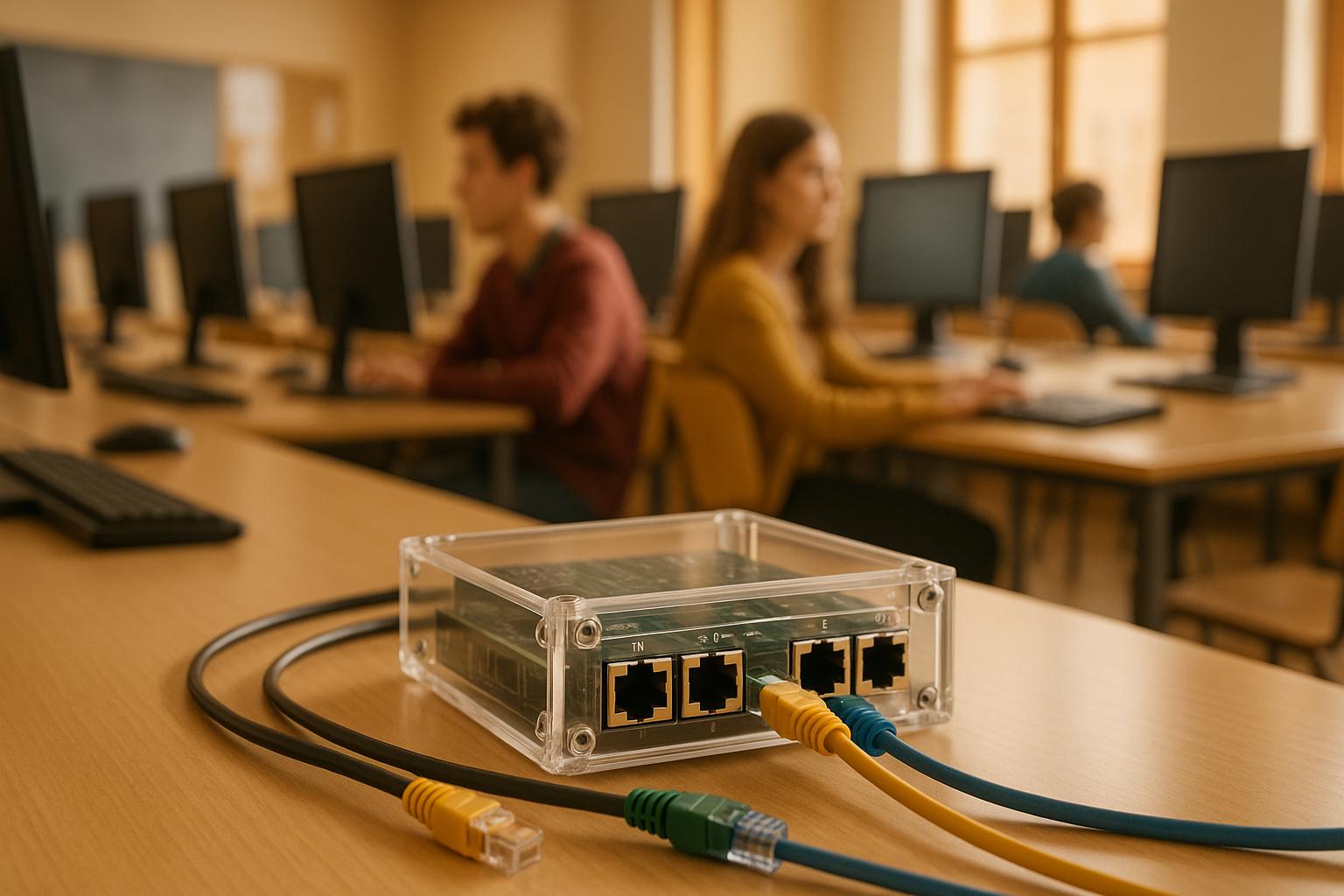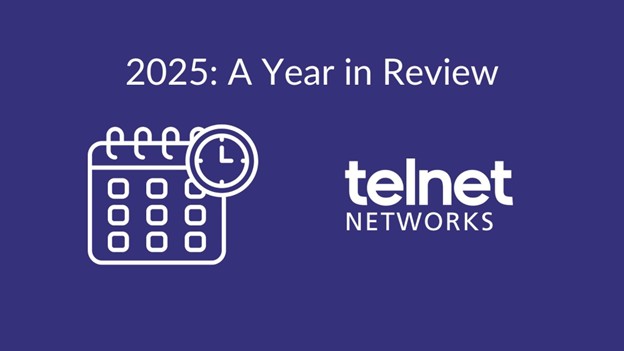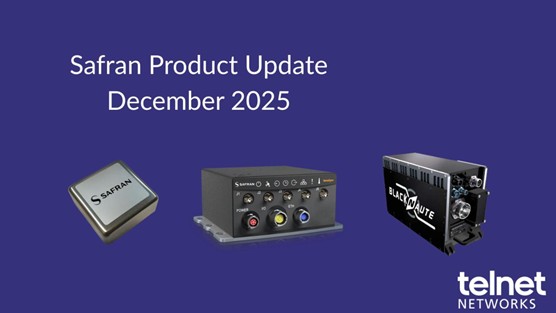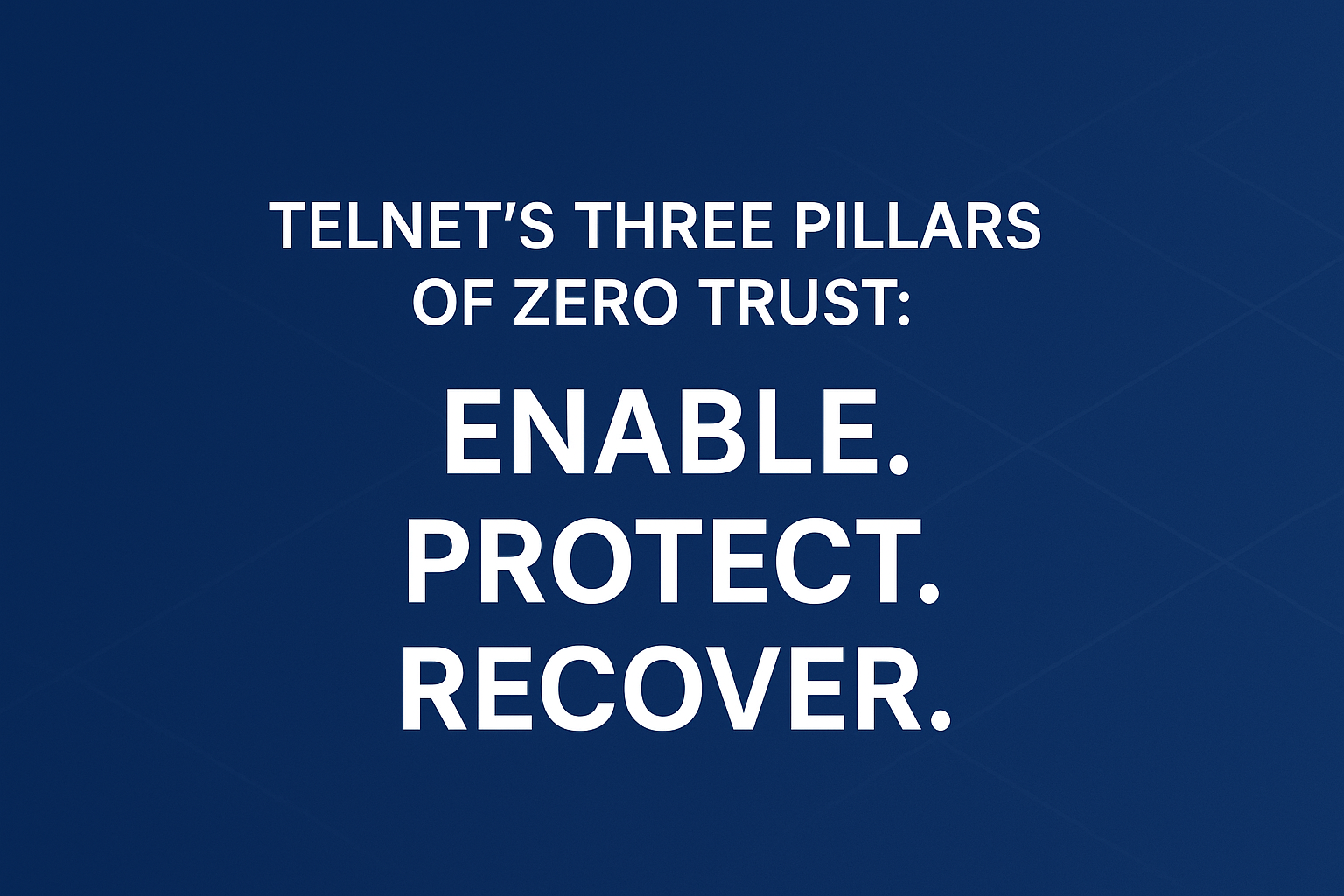Struggling with school network security? Network TAPs (Test Access Points) might be the answer. These hardware devices provide full visibility into network traffic, helping schools detect threats, monitor activity, and meet compliance standards. Unlike traditional monitoring tools, TAPs capture every packet without disrupting data flow, ensuring reliable and precise network monitoring.
Key Benefits of Network TAPs for Schools:
- Enhanced Security: Detect ransomware, phishing, and unauthorized cloud usage.
- Full Network Visibility: Eliminate blind spots and monitor all activity.
- Compliance Support: Meet regulatory requirements with detailed traffic logs.
- Ease of Use: Minimal maintenance, no ongoing user intervention required.
- Incident Investigation: Access complete traffic history for forensic analysis.
Quick Overview:
- Placement: Install TAPs at critical traffic points (e.g., between routers and firewalls).
- Integration: Pair with firewalls, intrusion detection systems, and visibility platforms.
- Scalable: Supports scalability from 1G to 400G speeds.
By deploying TAPs strategically, schools can safeguard sensitive data, improve network performance, and stay ahead of evolving cyber threats. Ready to secure your school network? Read on for practical deployment tips, tools, and real-world examples.
Network TAPS
How to Deploy Network TAPs in School Environments
To maintain peak network performance in school environments, deploying TAPs effectively requires a well-thought-out visibility strategy. Below, we’ll dive into the best practices for placement, integration, and deployment across multiple sites.
Where to Place Network TAPs
Strategic placement is key to maximizing traffic visibility while ensuring the network runs smoothly. TAPs should be positioned at critical points where traffic flows heavily, such as between routers and firewalls, at server farm entry points, and along links connecting different building segments. These locations allow for the collection of vital network data without introducing latency.
By placing TAPs at these choke points, network managers can capture packets to analyze traffic flow, identify bottlenecks, and improve overall performance. Monitoring the control plane is equally important – TAPs can be used to observe control traffic, helping to detect anomalies, address security risks, and provide a complete picture of the network’s health.
For a practical solution, consider inline packet brokers with built-in Bypass TAPs. These devices can be installed between routers, switches, and firewalls to copy traffic seamlessly while preserving network reliability.
Connecting TAPs with Security Systems
Integrating TAPs with existing security tools strengthens the overall security framework. Unlike port mirroring, which may drop packets during congestion, TAPs ensure full traffic visibility by duplicating all network traffic. When connected directly to firewalls and intrusion detection systems, TAPs create a more secure and efficient ecosystem, especially when placed near firewalls or critical server links.
To manage complex deployments, use aggregation devices that combine traffic from multiple TAPs into a single feed for security probes. This reduces complexity and costs while improving efficiency. Regeneration TAPs can also send identical traffic copies to multiple security tools, ensuring redundancy and constant monitoring.
"A network security detection and prevention scheme using a combination of network taps and aggregation devices can improve visibility and redundancy, reduce system complexity and diminish initial and continuing costs for implementation." – Datacom Systems Inc.
For even greater functionality, connect TAPs to a visibility platform. This setup enables advanced features like traffic filtering, aggregation, SSL/TLS decryption, and replication, streamlining security operations and improving threat detection.
TAP Deployment Across Multiple School Buildings
Deploying TAPs across a school district requires careful planning to ensure consistent coverage and minimal disruption. TAPs should be installed on all critical links to provide immediate access during security incidents.
The ideal time to deploy TAPs is during the initial network setup, as this avoids downtime later. For larger deployments, prioritize critical high-traffic links for TAP installation and reserve SPAN ports for areas where TAPs are less practical.
When working across multiple buildings, technical factors like power budgets and split ratios become more complex. Properly assessing the network’s light limitations, especially for fiber connections, is essential to select the correct split ratios.
Following installation best practices is essential. Use clean, new cabling and connectors to avoid issues during setup. For streamlined monitoring, connect all TAPs to a centralized visibility platform. This approach allows IT teams to oversee the entire district from one location, ensuring robust security and consistent network monitoring across all buildings.
Traffic Analysis and Threat Detection in Schools
When TAPs (Test Access Points) are integrated into a school network, they unlock a layer of security by enabling detailed traffic analysis. With the right tools and techniques, IT teams can transform raw network data into actionable insights, helping them identify and address threats before they escalate.
Traffic Analysis Tools
The data captured by Network TAPs needs specialized tools to uncover potential security threats hidden within network communications. One of the most trusted tools for this purpose is Wireshark. Known for its deep packet inspection capabilities, Wireshark allows IT teams to dissect individual packets, providing a clear view of network activity. This open-source tool is particularly effective for protocol analysis, helping administrators spot unusual communication patterns or suspicious data transfers that could signal a threat.
For schools handling larger traffic volumes, Elastic Packetbeat is a powerful option. It offers real-time network analytics and can correlate traffic patterns across multiple segments. By integrating with log management systems, Packetbeat simplifies the detection of behavioral anomalies that might indicate a security breach.
Modern network traffic analysis (NTA) solutions take things a step further by not just inspecting packets but also analyzing overall activity to detect anomalies. These tools are especially useful in educational settings, where they can provide real-time alerts, allowing administrators to act quickly in response to unusual traffic or potential breaches.
One of the standout advantages of TAP-fed analysis tools is their access to unfiltered, complete network data. Unlike monitoring systems that rely on traffic sampling, TAPs capture every bit of network activity, including errors, and send it to monitoring ports. This ensures IT teams have a comprehensive view of their network, even during periods of heavy traffic, making it easier to detect and neutralize threats specific to schools.
Finding and Stopping Common School Network Threats
School networks face unique challenges that demand tailored detection strategies. Between July 2023 and December 2024, 82% of K–12 schools reported cyber incidents, totaling over 9,300 confirmed cases across approximately 5,000 institutions during that time.
Ransomware and phishing attacks are among the most common threats targeting schools. TAPs play a critical role in identifying the early warning signs of ransomware, such as unusual file access patterns or suspicious communications. They also help capture phishing attempts by analyzing all traffic within the network.
Another growing concern is unauthorized cloud usage, particularly in environments where students and staff frequently access online services. TAPs monitor all outbound traffic, making it easier to detect abnormal data transfers or unauthorized uploads. The threat landscape is evolving rapidly, with cybercriminals leveraging AI to craft realistic phishing emails and exploiting legitimate platforms like SharePoint, OneDrive, and Dropbox for malicious purposes.
Using TAPs for Incident Investigation
Beyond detecting threats, TAPs are invaluable for incident investigations. When a security breach occurs, TAPs provide a complete history of network traffic, offering IT teams the data they need for a thorough investigation. Unlike other monitoring tools that might miss critical information during high-traffic periods, TAPs capture every packet, ensuring no detail is overlooked.
By establishing a baseline of normal network activity, IT teams can quickly identify unusual patterns that may indicate a breach. TAPs also help answer critical questions during investigations, such as which systems were compromised, what data was accessed or stolen, and how attackers navigated the network. This level of detail, made possible by complete packet captures, provides clarity that other tools might fail to deliver.
"One of your worst nightmares [as an attacker] is that out-of-band network TAP that’s really capturing all the data, understanding anomalous behavior going on, that somebody’s paying attention to." – Rob Joyce, Retired NSA Director
sbb-itb-f59d864
Meeting Educational Compliance Requirements
Educational institutions operate under strict regulatory guidelines, making precise network monitoring a necessity. Network TAPs (Test Access Points) offer the visibility and data capture capabilities schools need to meet compliance standards while safeguarding sensitive information. By capturing detailed network traffic, TAPs help schools adhere to regulations such as FERPA and PCI DSS, simplifying compliance with educational data protection laws.
Monitoring Payment System Traffic
School cafeterias, bookstores, and similar payment systems must comply with the Payment Card Industry Data Security Standard (PCI DSS). Network TAPs provide the continuous monitoring needed to secure cardholder data and maintain compliance across payment processing systems.
TAPs monitor all payment system traffic, flagging suspicious activity or unauthorized access attempts. By observing the entire network path of payment data, TAPs ensure protection throughout every transaction.
This constant monitoring helps schools meet key PCI DSS requirements, such as logging detailed transaction data, detecting anomalies in network traffic, and maintaining accurate records of payment-related activity. These capabilities are essential for identifying potential breaches before they escalate.
To maximize security, schools should configure TAPs to capture traffic from all network segments involved in payment processing – covering everything from payment terminals to external gateways. Regular vulnerability scans and system testing, supported by TAP data, can reveal weaknesses that might expose cardholder information.
Staff training is another vital aspect of PCI compliance. Reports generated by TAPs can provide clear examples of proper and improper data handling, reinforcing best practices. Programs like SecurityMetrics PCI training help staff understand the 12 PCI DSS requirements, while TAP monitoring ensures these practices are consistently implemented. Additionally, TAPs simplify the creation of precise, audit-ready reports, making compliance verification more efficient.
Generating Audit Reports
Network TAPs excel in producing audit-ready reports that are essential for compliance verification. By capturing complete packet data, TAPs create comprehensive and tamper-proof audit trails that meet the documentation requirements of various regulatory frameworks.
TAPs generate detailed traffic logs, including timestamps, source and destination information, protocol details, and data transfer volumes. These logs can be filtered and formatted to meet specific audit needs while protecting sensitive information through anonymization.
Automated tools can process TAP data to identify errors, policy violations, and compliance gaps across network devices. This automation reduces manual workload and delivers timely, accurate reporting.
Audit reports from TAP data document a school’s data security measures, device configurations, and system maintenance activities. These records strengthen overall compliance and provide evidence of due diligence during regulatory reviews.
Schools can configure TAP systems to regularly generate compliance reports, tracking metrics like failed login attempts, unusual access patterns, and policy violations. These reports can be automatically shared with stakeholders and securely stored for future audits.
Beyond compliance, TAP-generated audit trails are invaluable for incident response. In the event of a security breach or regulatory violation, detailed logs provide forensic evidence to assess the scope of the issue and demonstrate corrective actions to authorities. These records not only validate compliance but also bolster a school’s overall network security.
Maintaining Network TAP Deployments
To keep school networks running smoothly and securely, regular maintenance of network TAPs is a must. Routine upkeep ensures that the network remains visible and secure, prevents performance dips, and allows IT teams to handle new security challenges and fluctuating traffic demands effectively.
Adjusting TAPs for Peak School Periods
School networks often see spikes in traffic during events like standardized testing, device rollouts, and enrollment. IT teams can use normal traffic data to identify these high-demand periods and prepare in advance to avoid performance issues.
Modern network TAPs come equipped with management tools that notify administrators when network usage hits certain thresholds. These alerts help IT teams take action, such as adjusting settings, balancing loads, or filtering data to manage traffic more efficiently. This capability is especially helpful during unforeseen surges, like when large numbers of students access online platforms or download resources at the same time.
During these peak times, TAP configurations can be fine-tuned to prioritize critical educational traffic while maintaining full network visibility. For instance, TAPs can be set to filtering or aggregation modes to better control traffic flow. Schools can also adopt a "TAP-All" approach, placing TAPs on all key network links to ensure visibility, even if not all traffic is actively monitored.
Once traffic management is under control, keeping firmware updated is the next step to maintaining long-term effectiveness.
Updating TAP Firmware and Software
Firmware updates are crucial for keeping TAPs secure and compatible with a school’s evolving network setup. These updates improve compatibility, boost performance, and address potential security vulnerabilities. Neglecting firmware updates can lead to performance issues, security gaps, and conflicts with newer devices or software.
Schools should develop a regular update schedule, either by manually checking for updates or enabling automated updates where feasible. However, in school environments, where network stability is critical during class hours, automatic updates should be implemented cautiously.
To minimize disruptions, schedule firmware updates during off-peak hours and back up configurations beforehand. Stable power and internet connections are essential during updates to avoid failures that might require manufacturer intervention. Backing up TAP settings is especially important in complex setups with custom rules or monitoring configurations.
Always review manufacturer release notes for details on new features, fixes, and compatibility changes. Aiming to update TAP firmware once or twice a year – after confirming the updates’ stability – strikes a good balance between security and operational continuity.
Training IT Staff on TAP Management
The success of TAP deployments in schools hinges on well-trained IT staff. Training ensures that staff can design, deploy, and troubleshoot TAP solutions effectively. Without proper knowledge, even the most advanced TAP systems may fail to deliver the intended benefits.
IT staff should be trained in TAP setup, configuration, and performance tuning. They need to know how to connect cables correctly, verify system functionality, and resolve cabling issues. Improper connections can create blind spots, undermining network security. Staff should also understand light limitations and split ratios to identify the best TAP setups for specific needs.
Hands-on training, including labs and real-world scenarios, helps bridge the gap between theory and practice, ensuring staff can apply their knowledge in dynamic school environments. Many TAP manufacturers offer structured training programs through certified partners, and schools should consider scheduling these sessions. Online learning options are also available, enabling IT teams to stay updated on the latest TAP technologies and techniques.
"The switch treats SPAN data with a lower priority than to-port data … the best strategy is to make decisions based on the traffic levels of the configuration and when in doubt to use the SPAN port only for relatively low-throughput situations." – Cisco
This insight highlights the importance of informed decision-making in network monitoring. By understanding the nuances of different monitoring methods, trained staff can ensure that TAP deployments continue to meet the school’s growing security needs effectively.
Conclusion
Network TAPs take school network security to the next level, shifting from reactive monitoring to proactive threat detection. Unlike traditional SPAN ports, which can miss packets and create blind spots, TAPs capture every packet – including malformed ones and physical layer errors – without introducing any latency. This comprehensive visibility not only protects sensitive student information but also ensures compliance with regulatory requirements.
One K-12 district demonstrated the benefits of TAPs by pairing them with packet brokers. This setup enabled automatic failover using heartbeat packets, effectively removing single points of failure and ensuring uninterrupted network services. This real-world example highlights how TAPs can be seamlessly integrated into school networks for enhanced resilience.
For IT teams ready to adopt TAPs, the TAP-ALL strategy offers a practical and scalable approach. It’s cost-efficient for initial infrastructure setups and supports growth from 1G to 400G speeds. By addressing vulnerabilities and maintaining continuous monitoring, TAPs help secure network performance while meeting compliance requirements.
To maximize the effectiveness of TAPs, consider these critical steps:
- Use new cabling and ensure all connections are clean to avoid failures that could disrupt monitoring.
- Calculate your link loss budget before installation, accounting for the TAP’s insertion loss to ensure optimal performance.
- Connect TAPs to a visibility platform for traffic aggregation and filtering, turning raw data into actionable security insights.
As cybersecurity threats evolve, schools equipped with properly deployed TAPs gain a competitive edge. Rob Joyce, a former NSA Cybersecurity Director, emphasized the importance of such tools:
"[An attacker’s] worst nightmare is that out-of-band network tap that really is capturing all the data, understanding anomalous behavior that’s going on, and someone is paying attention to it. You’ve gotta know your network, understand your network, because [the attacker] is going to."
FAQs
What makes Network TAPs more effective than SPAN ports for monitoring and securing school networks?
Network TAPs stand out as the go-to option for monitoring and securing school networks because they deliver a complete and unaltered copy of network traffic. Unlike SPAN ports, TAPs don’t drop packets or modify data, ensuring precise analysis and giving you a clearer picture of potential security risks. This level of accuracy is critical when identifying and addressing threats.
SPAN ports, by comparison, come with several drawbacks. They can drop packets, alter frame timing, and even fail to capture corrupted packets, leading to gaps or inaccuracies in the data collected. On top of that, SPAN ports are vulnerable to oversubscription and prioritize traffic forwarding at a lower level, making them less reliable for handling high-demand monitoring tasks.
TAPs, however, operate passively, meaning they don’t interfere with the network and are immune to hacking attempts. This makes them a safer and more dependable choice for protecting school networks, especially in an environment where security and reliability are non-negotiable.
How can schools effectively integrate Network TAPs with their security systems to improve threat detection?
Integrating Network TAPs (Test Access Points) into school security systems can significantly enhance the ability to detect threats by offering clear insight into network traffic. To make the most out of these tools, TAPs should be carefully positioned to monitor all critical areas of the network while avoiding any impact on performance or causing delays. This setup ensures that both incoming and outgoing traffic is captured effectively for thorough analysis.
When combined with advanced analytics tools, TAPs enable real-time monitoring and can trigger automated alerts for any unusual activity. Additionally, schools should routinely review and update their security measures to keep pace with new and evolving threats. By adopting this proactive strategy, educational institutions can establish a safer and more secure digital environment for students, staff, and administrators.
How can schools use Network TAPs to stay compliant with regulations like FERPA and PCI DSS while maintaining strong network performance?
To comply with regulations like PCI DSS while maintaining dependable network performance, schools can adopt a thoughtful approach to deploying Network TAPs.
Start by establishing clear data governance policies, including routine audits and compliance checks. These measures ensure that sensitive information, such as student records and payment data, is managed securely and aligns with regulatory standards.
Next, integrate Network TAPs to monitor network traffic in real time. TAPs offer greater visibility into data flow, helping schools quickly identify vulnerabilities, detect unauthorized access, and securely handle sensitive information. This real-time monitoring supports compliance efforts without sacrificing network speed or reliability.
By pairing strong governance policies with efficient TAP deployment, schools can safeguard their networks while meeting essential regulatory requirements.






